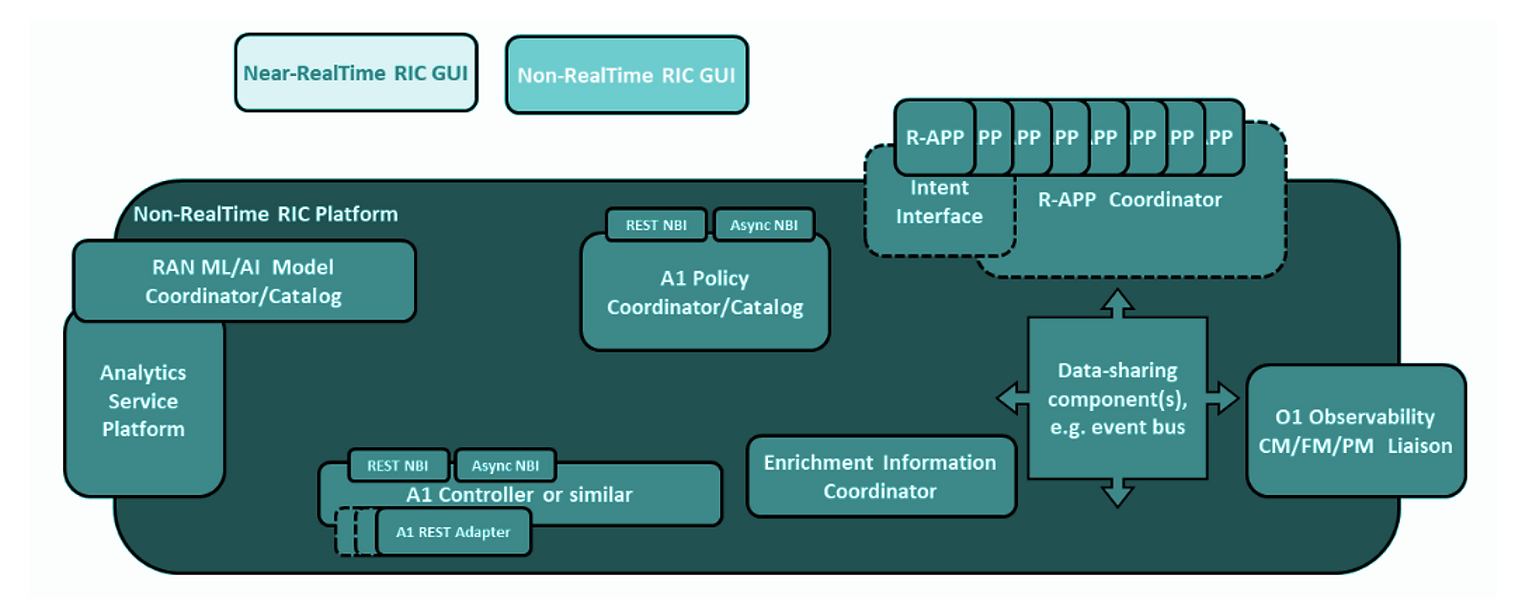In this part 2 of a 3 part series (part 1 here), I am going to introduce the non-RT RIC. Before jumping into the non-RT RIC capabilities, let's evaluate the limitations of current RAN infrastructures and future needs.
Rapid traffic growth and multiple frequency bands utilized in a commercial network make it challenging to steer the traffic in a balanced distribution.
Current controls are limited to:
The current semi-static QoS framework does not efficiently satisfy diversified quality of experience (QoE) requirements such as cloud VR or video applications. The framework is limited to looking at previous movement patterns to reduce the number of handovers.
The non-RT RIC, which is part of O-RAN Service Management & Orchestration (SMO) layer, addresses these current limitations and supports various use cases. It allows operators to flexibly configure the desired optimization policies, utilize the right performance criteria, and leverage machine learning to enable intelligent and proactive traffic control.
The following figure shows a functional view of non-RT RIC platform.

As described in O-RAN architecture, the non-RT RIC will communicate with near-RealTime RIC element via the A1 interface. Using the A1 interface the non-RT RIC will perform actions such as:
The Non-RT RIC platform within the SMO collects FCAPS (fault, configuration, accounting, performance, security, management) data related to RAN elements over the O1 interface. Examples of collected items:
The collected data is used to derive analytics data. Derived analytics data includes measurement counters and KPIs that appropriately get aggregated by cell, QOS type, slice, etc. Examples of derived data analytics:
The non-RT RIC can provide data driven operations to various RAN optimizations. AI-enabled policies and ML-based models generate messages in non-RT RIC that are conveyed to the near-RT RIC. The core algorithm of non-RT RIC is owned and deployed by network operators.
These algorithms provides the capability to modify the RAN behavior based by deployment of different models optimized for individual operator policies and optimization objectives.
Following are few such examples and applicable scenarios:
In this next post we will see the use cases where the non-RT RIC can play a pivotal role to optimize the RAN resources.